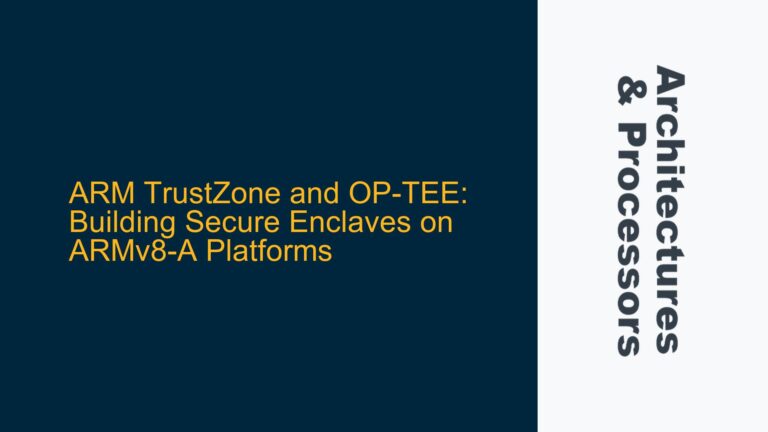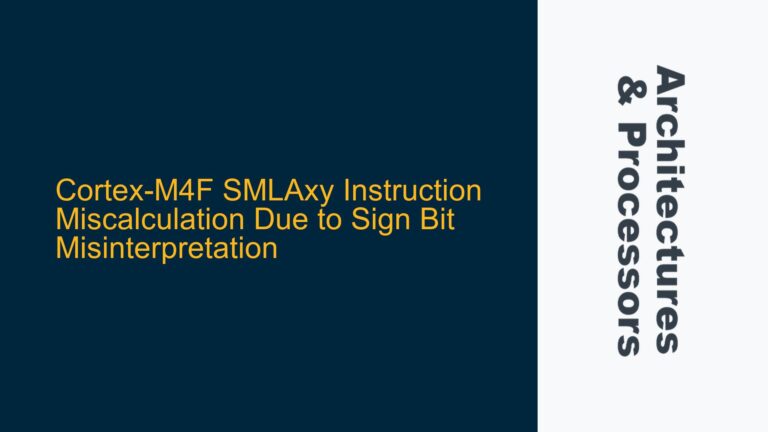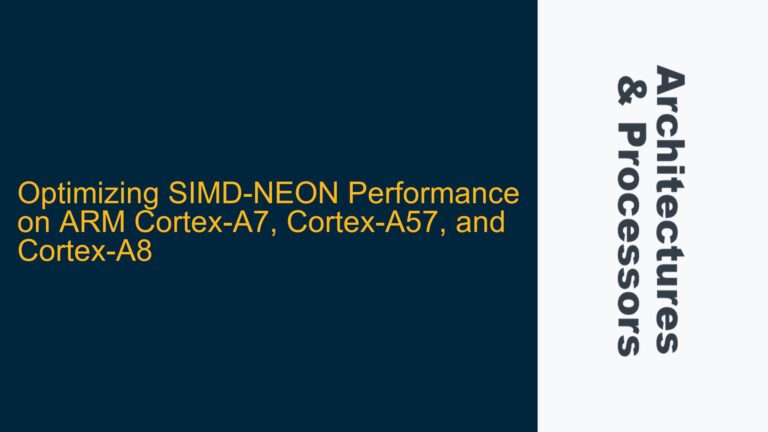ARM Cortex-M4 Internal Flash Memory Architecture and Use Cases
The ARM Cortex-M4 microcontroller is widely used in embedded systems due to its balance of performance, power efficiency, and cost-effectiveness. One of its key features is the internal flash memory, which is non-volatile and retains data even when power is disconnected. This makes it an ideal candidate for storing critical data such as passwords, configuration settings, or other persistent information. However, managing flash memory requires a deep understanding of its architecture, limitations, and the associated software techniques.
The internal flash memory in Cortex-M4 devices is organized into sectors or pages, depending on the specific microcontroller variant. Each sector or page can be independently erased and programmed. Flash memory operations are typically slower than RAM accesses, and the memory has a limited number of write/erase cycles (usually in the range of 10,000 to 100,000 cycles). Additionally, flash memory can only be written in word or half-word increments, and it must be erased before being reprogrammed.
For password storage, the internal flash memory is a suitable choice because it provides persistence across power cycles. However, care must be taken to ensure that the flash memory is managed efficiently to avoid premature wear and to maintain data integrity. This involves understanding the flash memory controller, the programming and erasing procedures, and the potential pitfalls such as write collisions, read-while-write (RWW) limitations, and alignment requirements.
Flash Memory Controller Configuration and Erase/Write Timing Issues
The flash memory controller in Cortex-M4 microcontrollers is responsible for managing all flash operations, including reading, writing, and erasing. Misconfigurations or improper timing of these operations can lead to data corruption, system crashes, or even hardware damage. One common issue is the omission of proper wait states or delays between flash operations, which can cause the flash memory controller to fail or produce incorrect results.
When erasing a sector or page, the flash memory controller must be configured with the correct erase time, which varies depending on the specific microcontroller and the size of the sector being erased. If the erase time is too short, the sector may not be fully erased, leading to data retention issues. Conversely, if the erase time is too long, it can unnecessarily delay the system and increase power consumption.
Similarly, when writing to flash memory, the write time must be carefully managed. Flash memory can only be written in specific word or half-word sizes, and the data must be aligned to the appropriate boundaries. Writing data that is not properly aligned can result in write collisions, where the flash memory controller attempts to write to an invalid address or overwrite existing data. This can cause data corruption or trigger a hard fault exception.
Another critical consideration is the handling of read-while-write (RWW) operations. Some Cortex-M4 microcontrollers support RWW, allowing the CPU to read from one flash memory bank while writing to another. However, if the system attempts to read from the same bank that is being written to, it can result in a read error or data corruption. Proper bank management and synchronization are essential to avoid these issues.
Implementing Flash Memory Management for Password Storage
To implement reliable password storage on the internal flash memory of a Cortex-M4 microcontroller, a structured approach is required. This involves defining a memory map, implementing robust erase and write procedures, and ensuring data integrity through checksums or error correction codes (ECC).
First, a memory map should be defined to allocate specific sectors or pages for password storage. This helps to isolate the password data from other application data and simplifies management. For example, a dedicated sector can be reserved for passwords, with a portion of the sector used for metadata such as password length, checksums, and version information.
Next, the erase and write procedures must be implemented with careful attention to timing and alignment. Before writing a new password, the target sector must be erased. This involves configuring the flash memory controller with the correct erase time and ensuring that the sector is fully erased before proceeding. Once the sector is erased, the new password can be written in word or half-word increments, ensuring that the data is properly aligned and that the write time is respected.
To enhance data integrity, checksums or ECC can be used to detect and correct errors. A simple checksum can be calculated for the password data and stored alongside the password. When the password is read, the checksum can be recalculated and compared to the stored value to detect any corruption. For more robust error detection and correction, ECC can be implemented, although this requires additional computational resources and may not be necessary for all applications.
Finally, it is important to implement a mechanism for wear leveling to extend the lifespan of the flash memory. Wear leveling involves distributing write operations across different sectors or pages to avoid excessive wear on any single sector. This can be achieved by maintaining a log of used sectors and rotating the write operations accordingly. Additionally, the number of write/erase cycles should be monitored, and the system should be designed to handle the eventual wear-out of the flash memory.
In conclusion, managing internal flash memory for password storage on an ARM Cortex-M4 microcontroller requires a thorough understanding of the flash memory architecture, careful configuration of the flash memory controller, and robust implementation of erase, write, and data integrity procedures. By following these guidelines, developers can ensure reliable and persistent password storage while minimizing the risk of data corruption and premature flash memory wear.






